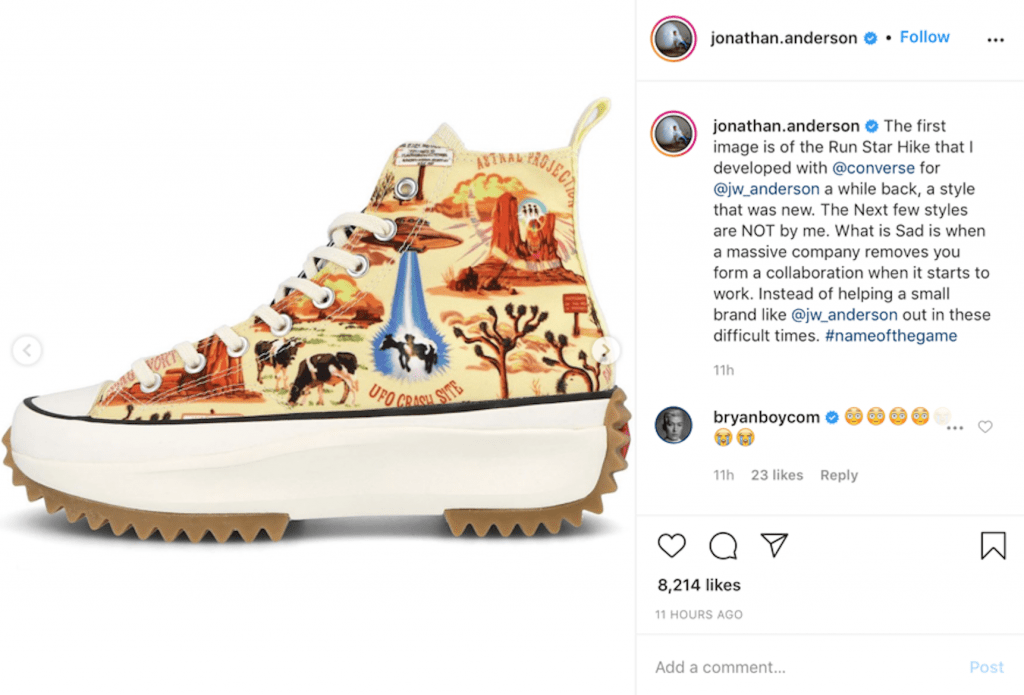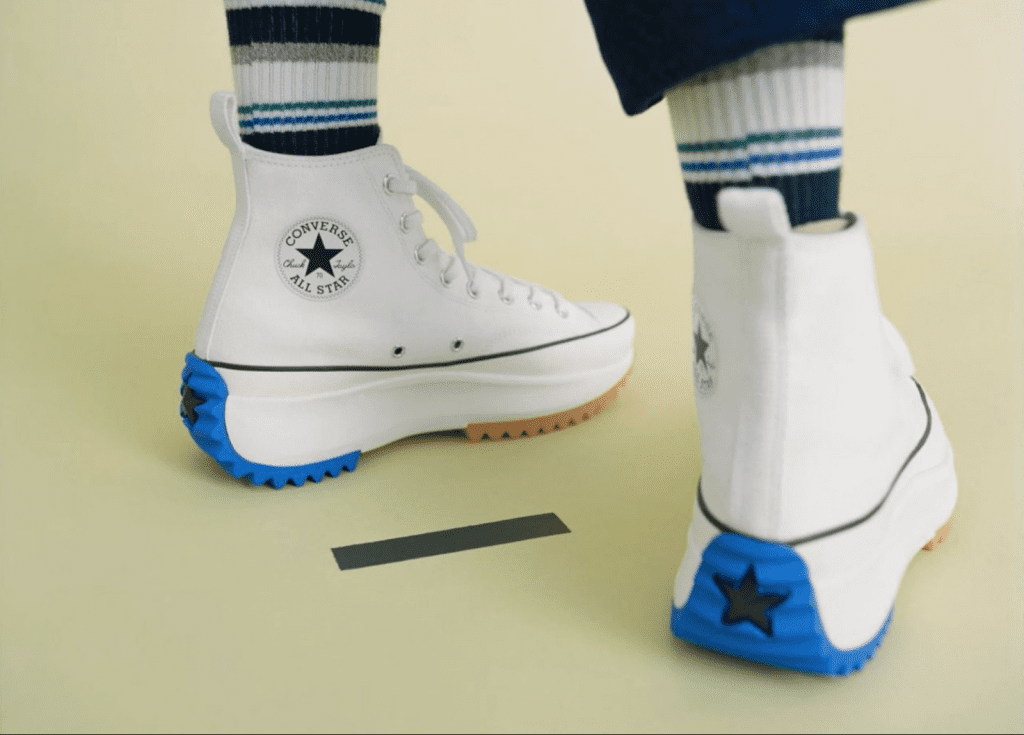After collaborating with Converse on a collection of uniquely-designed sneakers, which appeared in his Spring/Summer 2019 collection alongside handkerchief-point dresses, floor-grazing-fringe adorned jackets and skirts, and various takes on his signature puff-sleeved tops, Jonathan Anderson claims that the Nike-owned footwear giant has continued to make the All Star-inspired sneakers he created almost two years after they first debuted on his runway. However, unlike the original designs, which are currently listed as “sold out” on Converse’s site, the chunky rubber soles of the recent offerings are devoid of his brand’s name.
In an Instagram post this week, Anderson alleges that in furtherance of his collaboration with the footwear brand, he “developed a new shoe style” – the Run Star Hike. The shoe was something of an instant hit “because of its unique design,” Converse asserted in the lawsuit that it filed against Steve Madden in late May, in which it accused the fast fashion footwear brand of copying key elements of the shoe for its own lookalike pairs, and instead of backing down when Converse accused it of design patent infringement, Madden actually introduced an array of new models based on the same design.
Mr. Anderson is not a plaintiff in that suit (and in fact, is not listed as an inventor on the relevant design patents), as in all likelihood, he signed away his legal rights in the design of the shoe as part of his deal with Converse, as is common practice in connection with such collaborative deals. Converse’s ownership over the sneaker design – and thus, its exclusive right to decide how that design is later used – is also probably why Anderson has taken to Instagram to air his grievances (namely, “What is sad is when a massive company removes you form a collaboration when it starts to work. Instead of helping a small brand … out in these difficult times”), as opposed to doing so in court.
While Converse very well might be on the right side of the law in replicating the sneaker design without the J.W. Anderson branding on it, and thereby, removing the designer and his relatively young brand from any (potential) future revenue splitting and/or large-scale marketing that would come with an extended run of the original collection or a revamp, the issue is not necessarily just a legal one. It is one that goes to the enduring relationship between big brands and their collaborators.
Anderson’s Instagram post comes a matter of days after it was revealed that another major retail entity – Gap – had moved on from another young(ish) creative – designer Telfar Clemens – in something of a less than PR-friendly way. In that instance, Gap decided to indefinitely put a stop to the collaboration it had planned and promoted with Mr. Clemens’ brand, seemingly in favor of its recently-announced partnership with Kanye West’s Yeezy.
Faced with growing consumer backlash and media attention, reps for Gap vowed to pay Clemens for the design work that he had done in furtherance of the collab that never actually came into fruition, and in doing so, Gap appears to have avoided legal action. But again, the takeaway is almost certainly not merely of a legal nature; it is one that speaks to the imbalance of power between multi-national players and relatively much smaller creatives and their brands, as well as the potential methods by which established industry entities will go to in order to continue to boost their revenues while also cutting costs.

Gap presumably benefitted from being able to tout an impending deal with Telfar – who the New York Times described recently as “a Black designer upending old ideas about gender, identity and community” – and his cult following until it opted to pull the plug when a bigger name came along. At the same time, Converse was able to enlist Anderson for his designs and the marketability of his name in certain segments of the market, in much the same way that it did with John Varvatos and his original creations for the company, before ultimately moving to de-brand the collabs and by removing the revenue-sharing and/or licensing aspect, and thereby, cutting those costs associated with the product(s).
During his tie-up with Converse back in the early 2000s, Varvatos put his unique spin on the brand’s footwear by ripping out the laces, and doing them up, in at least some cases, in a heavy leather. Varvatos’ name has since disappeared from Converse shoe styles, but his staples have remained.
In some sense, this is little more than good business, at least from a bottom-line, cost-cutting perspective: team up with a collaborator, pay them for their design services, as well as for their ability to market a collection to eager consumers, and then ultimately, phase them out once the contract term is up, and add their designs – which the brands now own – back into the roster.
But is this course of action of essentially removing the creatives from the picture – whether it be Gap simply giving Telfar the boot or Converse opting to ultimately turn the designs of its creative collaborators, who tend to be some of fashion brands’ biggest assets, into house-brand staples – really the most effective way forward for brands? The cost savings are certainly clear but so, too, is the potential for reputational damage. Just ask any Telfar fan.
A rep for Converse told TFL, “The Converse Run Star Hike, concepted by our product and design team and born out of the idea of combining two existing silhouettes, the classic Chuck 70 upper with the Run Star outsole, was first introduced via a collaboration with JW Anderson. The Converse Run Star Hike intends to explore new dimensions of proportion, stance and comfort as we continue to reimagine our classics. Jonathan has been a great advocate for the shoe and other silhouettes. We have immense respect for him as a designer and we are proud of what was accomplished during our three-year collaboration.”











